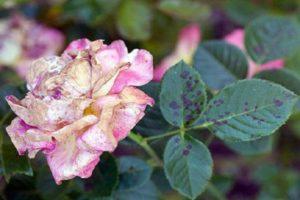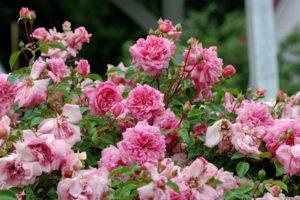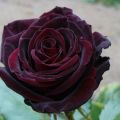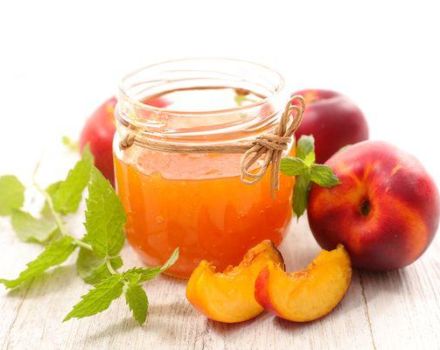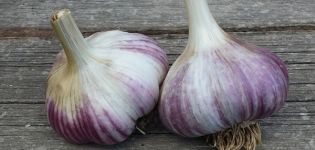Description and characteristics of varieties of varieties of roses Lydia, planting and care
A compact flowering bush with proper care becomes the main decoration of the garden plot. The main advantages of the culture are cold resistance, the ability to withstand frosts down to -20 ° C, abundant flowering before the arrival of autumn frosts. Rose Lydia is grown both in greenhouse conditions and in an open area, she feels great in the cool climate of temperate latitudes.
History of origin
The Lydia variety was developed by specialists of a Dutch company in 1995. This is a shrub rose, according to its varietal characteristics, belongs to the floribunda category: a small plant with abundant flowering and the formation of large flower rosettes.
Description and characteristics of the culture
The bush of the Lydia variety has a neat compact shape, it grows up to 60 cm.It is characterized by a weak susceptibility to fungal infection and insect pests.
External features of the rose:
- lack of thorns;
- leaves are oval, smooth, rich green color;
- deep pink buds, about 4 cm in diameter;
- inflorescences include 5 to 15 buds.
The varietal feature of the rose is abundant flowering, but this can only be achieved with proper plant care.
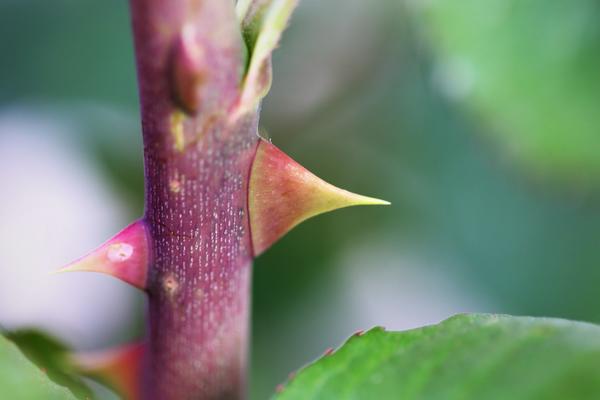
Advantages and disadvantages
Florists call the advantages of the Lydia variety:
- frost resistance;
- immunity to fungal pathologies and pests;
- lack of capriciousness in growing;
- flowering throughout the growing season.
The only drawback that displeases some gardeners is the black core of the flower, which becomes noticeable when the petals are fully opened.
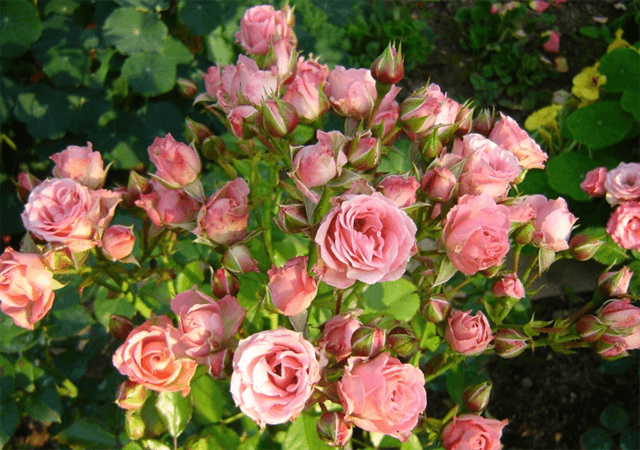
Overview of popular species
The Lydia variety includes 3 sub-varieties.
Lovely Lydia
The most common rose sub-variety. The bush does not grow higher than 60 cm. The diameter of the buds is 4 cm. The color of the petals of the Love Lydia rose is light pink with a cream shade or deep pink, almost crimson. With excessive illumination, the petals fade, due to which the color of the buds becomes less intense.
The sub-variety is characterized by lush and long flowering, if the bush grows on fertile soil, does not suffer from a lack of care.

Spray White Lydia
A compact shrub that does not exceed 50 cm in height, suitable for container growing.
Inflorescences include 10-15 flowers of a pale cream, almost white color. The bud has almost no smell, it is 4-6 cm in diameter.
Floribunda Classic Lydia
A compact but voluminous shrub, reaching 60 cm in height and 50 cm in width. For lush flowering, it needs an abundance of light, regular watering and a fertile substrate.
The buds are small, no more than 3 cm in diameter. The inflorescence includes 10-12 flowers. The petals are pale pink. Rare thorns are possible on elastic stems.
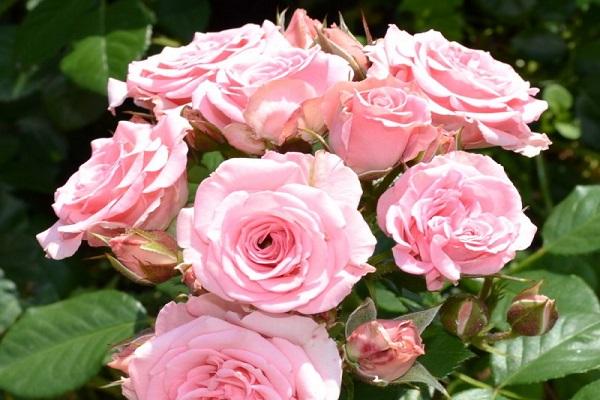
The subtleties of growing
Even an inexperienced gardener can handle planting a rose Lydia. Cultivation of a crop is trouble-free, the main thing is to observe the regime of watering and feeding.
When planted
A rose is planted in the second half of spring, when the soil thaws after winter, it warms up well with the spring sun.
Site selection
For the Lydia rose, choose an illuminated place, but not open. The bush should not be exposed to direct sunlight. The best option is an area with openwork penumbra. Also, the selected place should be protected from drafts and strong winds.
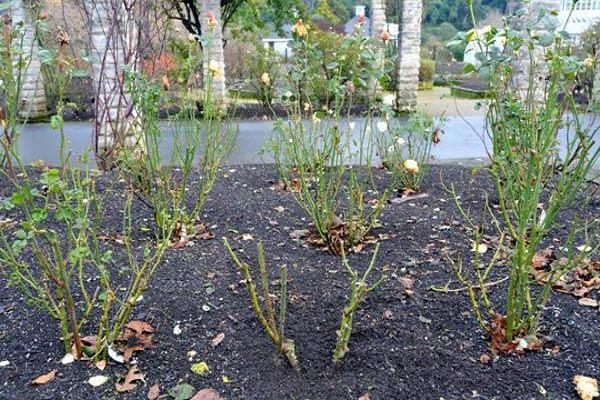
Preparation of planting material
The selected rose seedling must be carefully examined. The plant should be free of damage, traces of rot and fungal infection.
Before the planting procedure, the shoots of the seedling are pruned. Also, buds, injured and dried branches are cut off. 4-5 buds should remain on the main shoots. Secondary branches must have at least 3 buds. You also need to remove weak and broken roots, slightly shorten the lateral roots.
To make the slices heal faster, they are smeared with garden varnish. Then the seedling is placed for half a day in a container with an aqueous solution of sodium humate.
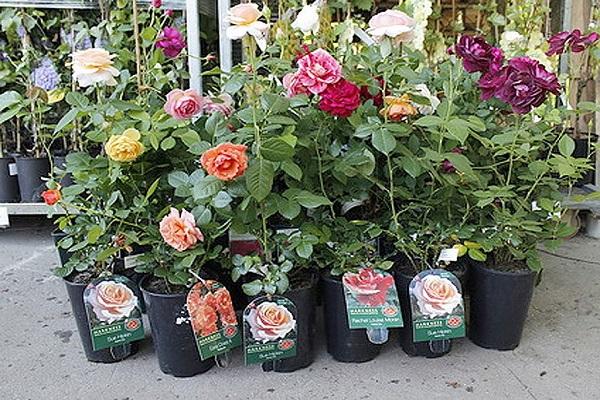
Landing scheme
The planting hole is prepared in the fall. The site selected for planting is cleared of weeds, roots remaining from other plants are removed.
If other species of the Rose family, hawthorn bush, cherry or quince tree previously grew on the site, then it is advisable to remove 50 cm of the upper soil layer and replace it with a new one. Otherwise, the rose will be weak due to lack of nutrition.
The soil on the site is dug to the depth of the shovel blade. Lumps of soil are turned over, but not broken. This will contribute to the destruction of soil pests and fungal infections in the winter cold. Break up lumps and level the soil in the spring.
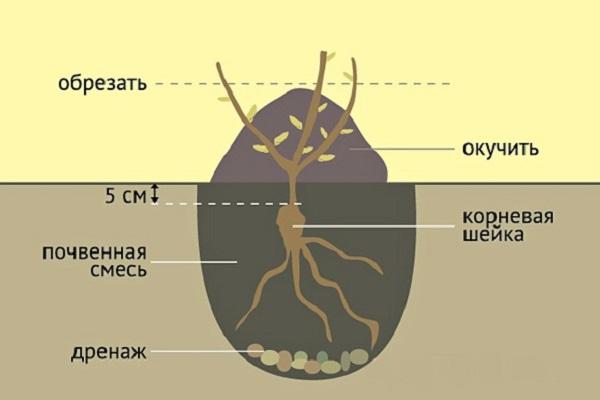
A rose Lydia is planted according to the following algorithm:
- dig a shallow planting hole (45 × 45 cm);
- the bottom is filled with drainage, a mixture is made of expanded clay, gravel, sand;
- top dressing is put on top, consisting of humus, peat, ripe manure;
- the rose is placed in the hole so that the grafting site is immersed in the ground to a depth of 2 cm;
- the roots are straightened, the seedling is covered with earth;
- the soil surface is slightly compacted, the bush is watered abundantly (8 liters of water per plant).
The nuances of flower care
Rose Lydia is not capricious in terms of care. It is enough to follow the standard agrotechnical procedures: water and feed the plant, form the crown, and put up a shelter for the winter.
Watering
Water the rose regularly: 2-3 times a week. If it is hot, then the crown is additionally sprayed.
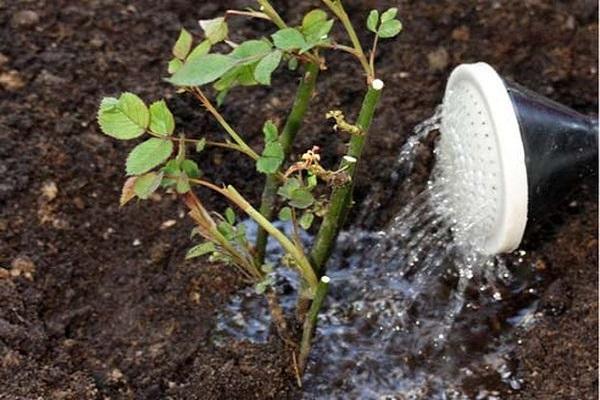
Top dressing
The roots of the rose are strengthened by the age of 3, before that it is not recommended to apply fertilizer under the bush.
Top dressing is carried out:
- in the spring - with a nitrogen preparation;
- in the summer - a potassium-phosphorus complex.
When the buds are forming, it does not hurt to fertilize the rose with manure.
Pruning
Prune the rose for:
- the formation of shoots;
- ensuring more lush and long-lasting flowering.
The procedure is carried out three times a season:
- in the spring, shoots are cut off to 12-15 cm, 2-3 buds are left on the main shoots, 1-2 on the secondary ones;
- in the summer they rid the plant of dried-up branches and wilted buds;
- sick and weak branches are cut in autumn.

Wintering
Despite its winter hardiness, the Lydia rose needs winter insulation. Insulation is installed if the night air temperature in winter falls below -8 ° C.Spruce paws are used as a covering material. A frame is placed on top, which should be 20 cm higher than the plant. It is covered with plastic wrap or agrofiber.
In early spring, the insulation is periodically opened for ventilation. And with the arrival of constant heat, they remove it.
Diseases and pests
The Lydia variety is immune to infectious pathologies and insects, subject to proper care. A rose gets sick if it is adjacent to weed and diseased vegetation, as well as if the owner does not perform care measures.
A rose can be hit by:
- Spider mite. To combat it, use Fitoverm insecticide. For prophylaxis, the plant is regularly examined for the presence of cobwebs, in hot weather, spraying is carried out.
- Aphid. If it is not enough, then it is enough to wash the plant with soapy water. If the lesion is neglected, then insecticides will have to be used - Karbofos, Actellik.
- Powdery mildew is a fungal infection that develops with excessive humidity and low temperatures. To combat the disease, spraying with 0.5% soda ash is carried out. Bordeaux solution is used for prevention.

How the plant is propagated
The Lydia rose is propagated by cuttings. The procedure is carried out in the summer months. The lower shoots with 3-4 leaves are selected, cut obliquely so that the cut has an angle of 45 °. The stalk should have one leaf and 2 buds at the bottom.
A rose is cut according to the following algorithm:
- the cutting is placed in a solution of a root growth stimulator for 2 hours;
- then planted in a container filled with peat and sand mixed in a 3: 1 ratio;
- the substrate is moistened, the container is covered with polyethylene to form a greenhouse effect;
- the film is periodically removed for airing.
The young plant is pruned the next year in the spring. Leave the main shoots with 2-4 buds, cut them by about 15 cm.
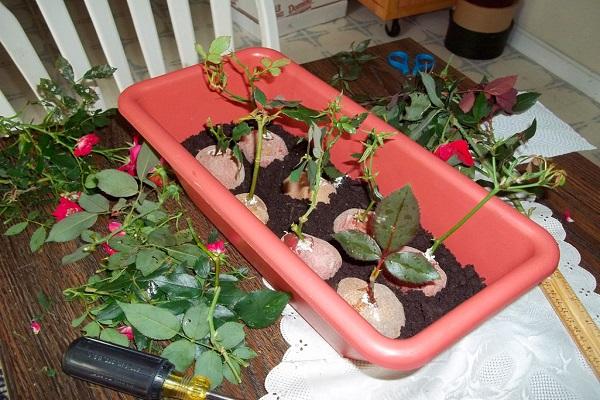
Use cases
The Lydia variety is considered a greenhouse, but, due to its winter hardiness, it is suitable for growing in the open field, and due to its compactness and unpretentiousness, it is often used in landscape design.
Rose Lydia is used for:
- formation of rosaries;
- drawing up border compositions;
- decoration of the terrace, porch, gazebo (as a pot culture).
They love to use a rose and florists to create lush festive bouquets.
